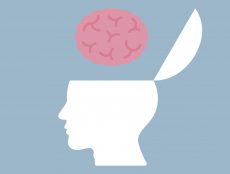
Articles
World Bank Report Concludes that Education Is Still a Good Investment
By Henry Kronk
May 13, 2018
In our current state of late capitalism, education has increasingly displayed a fraying connection with value. True, community college costs significantly less than a private non-profit university. That disparity in price will often play out in the expertise of the faculty, the research conducted, areas of specialization, student services, and more. But as many of us know, some of the best educators can be found at all levels and price points of higher ed. Former U.S. Second Lady Jill Biden (wife of Joe, that is) has been teaching English Literature at Northern Virginia Community College since 2009. (And, by the way, she’s got a 4.1 rating along with a chili pepper on RateMyProfessors.com.) Still, at most colleges, future engineers, nurses, architects, teachers, and aspiring novelists all pay roughly the same tuition despite the fact that their different educations will result in drastically different salaries. Last month, the World Bank sought to quantify one’s investment in education in broad, understandable terms. Their recent study, titled ‘Returns to Investment in Education: A Decennial Review of the Global Literature,’ looked at education in terms of ROI.
As authors George Psacharopoulos and Harry Antony Patrinos write, “The concept of the rate of return on investment in education is very similar to that for any other investment. It is a summary of the costs and benefits of the investment incurred at different points in time, and it is expressed in an annual (percentage) yield, like that quoted for savings accounts or government bonds. Returns on investment in education based on human capital theory have been estimated since the late 1950s. Human capital theory puts forward the concept that investments in education increase future productivity.”
For those who grok—and the staff of eLearning Inside discount ourselves from this population—the authors took a broad review of research from the 1950 to 2014 and used a Mincerian earnings function to find their results.
Results from the World Bank Study

The authors came to a very broad but simple conclusion: the private rate of return to a learner for every additional year of school they take stands at 8.8%. In other words, for each additional year of schooling one undergoes, she can expect an average increase of 8.8% to her hourly wage/annual salary.
As Patrinos writes in a separate post, “One … investment many people choose to invest in are United State stocks and bonds. However, when we learned that investors over a five-decade period from the mid-1960s collected only a mere 2.4 percent return, investing in education looks even more solid.”
Women, surprisingly, displayed a higher ROI for additional years of education compared to men, at roughly 10% and 8%, respectively.
A Few Caveats
The authors note that many years of higher education does not necessarily result in the public good (earnings instead tend to enrich smaller populations). But they still emphasize that education is a good investment, especially for governments.
“As the data shows, countries that have yet to achieve universal primary education should prioritize basic education, while countries with low rates of girls’ enrollment should focus on educational opportunities for women,” they write.
These are, at the end of the day, very broad estimations. (“There is no substitute for granular data, which provides critical clues for where to best invest and focus precious resources,” the authors reiterate.) It’s also unlikely that these findings would remain true in the U.S., where education at public universities has tripled in the past thirty years. Still, when one takes a risk on themselves by going after a higher education or re-skilling instead of settling for a paying job, it’s helpful to know that there’s some solid data backing that decision up.









No Comments